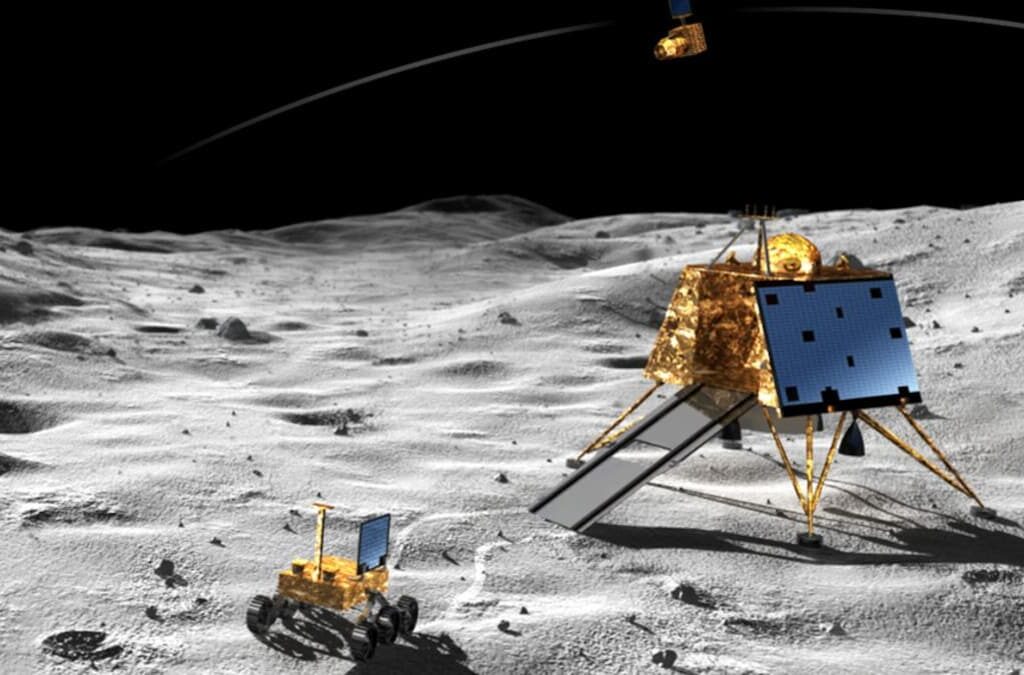Chandrayaan-3 is India’s third lunar exploration mission, following the successful Chandrayaan-1 and Chandrayaan-2 missions. The Indian Space Research Organisation (ISRO) has not yet released detailed information about the equipment that will be used in the Chandrayaan-3 mission, but it is expected to be similar to that of the previous missions.
Based on the previous missions, Chandrayaan-3 is likely to include the following equipment:
Lunar Orbiter: A spacecraft that will orbit the Moon to collect data and images of the lunar surface.
Lander: A vehicle that will descend to the lunar surface and perform experiments and collect samples.
Rover: A small vehicle that will move across the lunar surface to perform experiments and collect samples.
Payloads: A suite of scientific instruments that will be carried by the lander and rover to perform experiments, such as measuring the composition of the lunar surface and searching for water.
Communication Equipment: Antennas and other equipment to enable communication between the spacecraft and ground stations on Earth.

Exploring space and celestial bodies has always been a fascination for humans. Our understanding of the universe has been enriched by the discoveries and knowledge gained from space exploration. One of the recent missions to explore the Moon is India’s Chandrayaan-3 Lunar Exploration Mission. This mission is the third lunar exploration mission by the Indian Space Research Organisation (ISRO) and follows the successful Chandrayaan-1 and Chandrayaan-2 missions. Let’s take a closer look at the equipment expected to be used in the Chandrayaan-3 mission.
Chandrayaan-3 is expected to be similar in terms of equipment to the previous missions. It is expected to include a Lunar Orbiter, Lander, Rover, Payloads, and Communication Equipment.
The Lunar Orbiter is a spacecraft that orbits the Moon and collects data and images of the lunar surface. It is equipped with various instruments that help in the collection of scientific data. The Chandrayaan-1 mission had a Terrain Mapping Camera, Hyper Spectral Imager, and Lunar Laser Ranging Instrument on its Lunar Orbiter. These instruments helped in mapping the lunar surface, analyzing the mineral composition of the surface, and measuring the distance between the Moon and Earth.
The Lander is a vehicle that descends to the lunar surface and performs experiments and collects samples. It is equipped with various instruments that help in the collection of scientific data. The Chandrayaan-1 mission had a Moon Impact Probe (MIP) on its Lander. The MIP was released from the Lander and impacted the lunar surface. It was equipped with various instruments that helped in analyzing the lunar soil and the atmosphere.
The Chandrayaan-2 mission had a Lander named Vikram, which was intended to land on the lunar surface. However, the communication was lost with the Lander during its descent. For Chandrayaan-3, ISRO plans to use the same Lander design as Chandrayaan-2, with some modifications to improve its reliability and ensure a successful landing.
The Rover is a small vehicle that moves across the lunar surface to perform experiments and collect samples. It is equipped with various instruments that help in the collection of scientific data. The Chandrayaan-1 mission did not have a Rover, but the Chandrayaan-2 mission had a Rover named Pragyan. The Pragyan Rover had instruments that helped in analyzing the lunar soil and performing elemental analysis of the surface. It was also equipped with a laser-induced breakdown spectroscopy (LIBS) instrument that helped in determining the elemental composition of the lunar surface.
The Payloads are a suite of scientific instruments that are carried by the lander and rover to perform experiments. The instruments help in measuring the composition of the lunar surface and searching for water. The Chandrayaan-1 mission had eleven scientific instruments on board, including the Moon Mineralogy Mapper (M3) and the Chandrayaan-1 X-ray Spectrometer (C1XS). These instruments helped in identifying minerals on the lunar surface and analyzing the distribution of elements.
The Chandrayaan-2 mission had fourteen scientific instruments on board, including the ChaSTE (Chandrayaan-2 Large Area Soft X-ray Spectrometer) and RAMBHA (Radio Anatomy of Moon Bound Hypersensitive ionosphere and Atmosphere) instruments. The ChaSTE instrument helped in detecting soft X-rays emitted by the Moon’s surface and the RAMBHA instrument helped in studying the ionosphere and plasma environment around the Moon.
The Communication Equipment includes antennas and other equipment that enable communication between the spacecraft and ground stations on Earth. The Chandrayaan-1